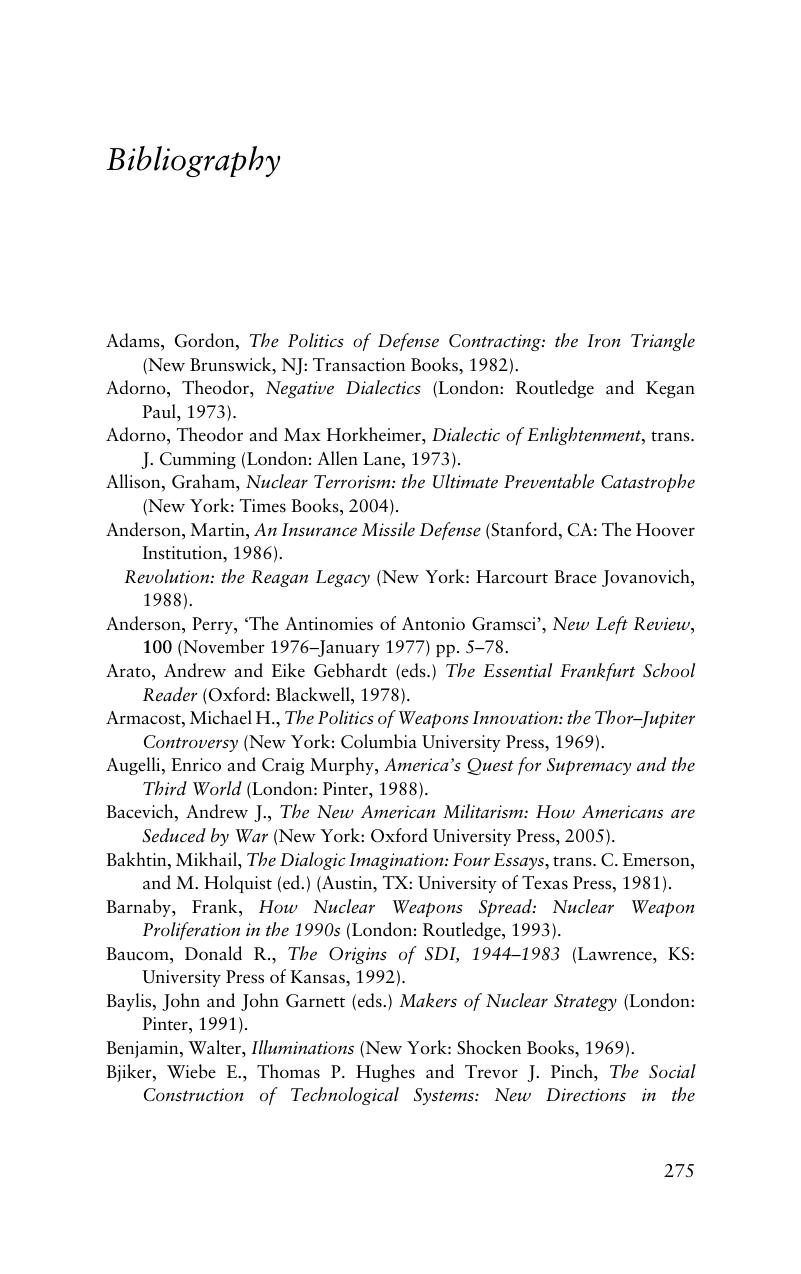Book contents
- Frontmatter
- Contents
- Acknowledgements
- List of abbreviations
- Introduction
- Part One Technology, security and culture
- Part Two Post-war missile defence
- Part Three The Strategic Defense Initiative
- Part Four Contemporary missile defence
- Conclusion: common sense and the strategic use of ‘technology’
- Bibliography
- Index
- Cambridge Studies in International Relations
- References
Bibliography
Published online by Cambridge University Press: 04 May 2010
- Frontmatter
- Contents
- Acknowledgements
- List of abbreviations
- Introduction
- Part One Technology, security and culture
- Part Two Post-war missile defence
- Part Three The Strategic Defense Initiative
- Part Four Contemporary missile defence
- Conclusion: common sense and the strategic use of ‘technology’
- Bibliography
- Index
- Cambridge Studies in International Relations
- References
Summary

- Type
- Chapter
- Information
- Justifying Ballistic Missile DefenceTechnology, Security and Culture, pp. 275 - 293Publisher: Cambridge University PressPrint publication year: 2009



